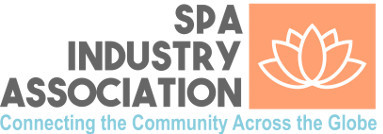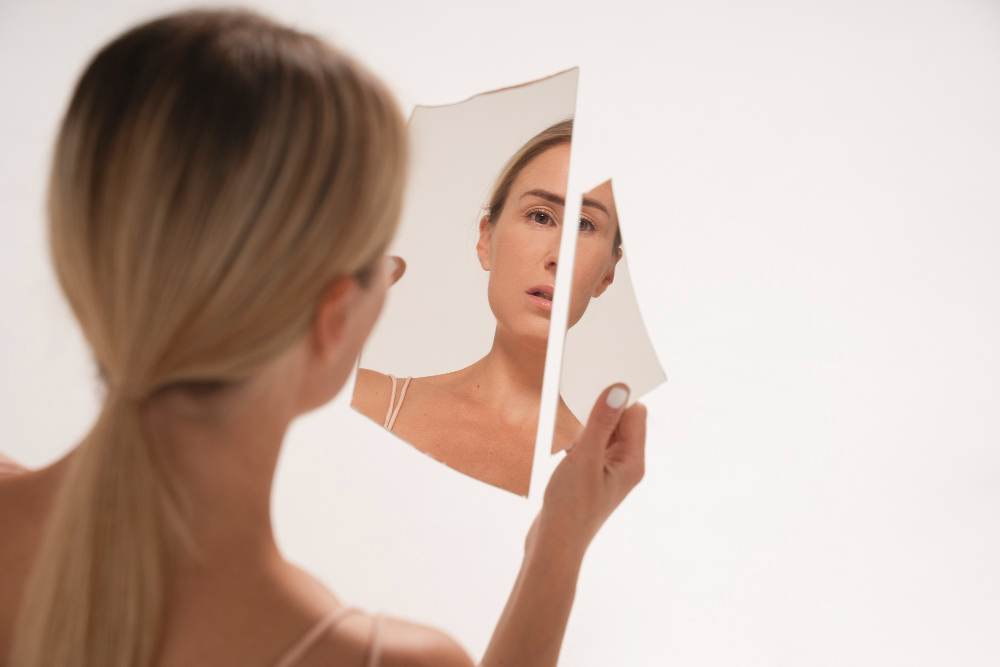Body dysmorphia and addiction are two complex issues that often intertwine, leading many down a challenging path of substance misuse. If you struggle with how you see your body, you might find yourself turning to substances as a temporary escape from discomfort. This pattern can quickly spiral into dependency. Therefore, understanding the link between distorted body image and the tendency to misuse substances is the first step toward addressing these issues effectively. Recognizing the problem is a significant step forward, and believing in yourself and your ability to overcome it is key. In this article, we’ll explore how image distortion fuels substance misuse and what can be done to tackle this dual challenge.
Understanding Body Dysmorphia
Body Dysmorphia Disorder (BDD) is a mental health condition characterized by an obsessive focus on perceived flaws in one’s appearance, which are often unnoticeable to others. Individuals with BDD can spend hours fixating on their appearance, engaging in repetitive behaviors like mirror checking or excessive grooming. This condition can severely disrupt daily activities and lead to intense distress.
Symptoms and Common Misconceptions
People often confuse BDD with normal insecurities, but the key difference lies in the intensity and impact of the preoccupations. Symptoms include:
- Excessive concern with a specific body part.
- Persistent comparison of one’s appearance with others.
- Avoidance of social situations due to self-consciousness.
It’s also a common misconception that BDD is purely about vanity. It’s more accurately a disorder of deep-seated anxiety and compulsive behavior rather than simply caring too much about looks.
Impact of Body Dysmorphia
The psychological impact of BDD is profound. It can lead to severe anxiety, depression, and even suicidal thoughts. The constant internal battle with their self-image may drive individuals to seek relief or escape. Unfortunately, this often manifests in unhealthy behaviors, including substance misuse. Individuals might use drugs or alcohol to numb the pain and self-critical thoughts that come with BDD, setting the stage for addiction.
How Image Distortion Fuels Substance Misuse
Understanding the connection between body dysmorphia and addiction is important in addressing the challenges faced by those affected. The link hinges on the intense emotional distress caused by distorted self-image, which often pushes individuals toward substance misuse as a way to cope.
Substances Commonly Abused and Why
Individuals struggling with body dysmorphia may turn to specific substances that they believe can alleviate their distress or alter their appearance. For example, stimulants are sometimes used in an attempt to lose weight, while alcohol might be consumed to ease social anxiety or depressive symptoms stemming from negative self-perception. This misuse can quickly become dependency, as temporary relief becomes a recurring need.
In truth, studies highlight a significant correlation between body dysmorphia and substance use disorders. Research conducted by the Anxiety and Depression Association of America found that nearly one-third of individuals with BDD engage in substance use to cope with their disorder. This data underscores the need for dual diagnosis treatments that address both issues simultaneously to enhance recovery outcomes.
Psychological Mechanisms
The psychological mechanisms at play involve coping strategies for managing overwhelming negative emotions associated with body dysmorphia. Substances may temporarily escape the critical inner voice that incessantly highlights perceived flaws. Over time, this can establish a harmful cycle where substance use intensifies as the individual’s mental health deteriorates, further embedding both disorders.
Strategies for Addressing Image Distortion and Substance Misuse
Addressing the combined challenges of body dysmorphia and addiction requires a multifaceted approach. Effective treatment strategies often involve psychological and medical interventions tailored to each individual’s needs. Understanding these options can empower those affected to seek help and regain control over their lives.
Therapy Options for Body Dysmorphia
Cognitive Behavioral Therapy
CBT is a highly effective treatment for body dysmorphia. CBT focuses on altering negative thought patterns and behaviors associated with one’s body image. It involves techniques like cognitive restructuring to challenge and change destructive beliefs and exposure therapy to reduce avoidance behaviors.
Partial Hospitalization Programs
For those dealing with severe cases of addiction, consider partial hospitalization as a structured yet flexible treatment option. Partial hospitalization programs (PHPs) provide intensive day treatment, allowing patients to receive therapy and medical care during the day but return home at night. This setup supports individuals in maintaining some of their daily routines, which can benefit long-term recovery. PHPs offer a blend of individual counseling, group therapy, and sometimes pharmacological support tailored to address both substance misuse and underlying issues like body dysmorphia.
Additional Recovery Methods
In addition to therapy and partial hospitalization, other recovery options include:
- Medication: Certain antidepressants or anti-anxiety medications can be prescribed to help alleviate the symptoms of body dysmorphia or to manage withdrawal symptoms and cravings associated with addiction recovery.
- Support groups: Joining support groups where individuals share experiences and coping strategies can provide social support and reduce feelings of isolation.
The Role of Society and Media in Image Distortion
The media plays a significant role in shaping perceptions of body image, often setting unrealistic standards that are difficult or impossible for most people to meet. This bombardment of idealized images can lead to body dissatisfaction, which is a common trigger for body dysmorphic disorder and can exacerbate substance misuse as individuals seek ways to cope with or conform to these standards.
Positive vs. Negative Media Influences
- Negative Influences: Frequent exposure to idealized bodies in advertisements, movies, and social media can increase feelings of inadequacy and anxiety, pushing individuals toward negative coping mechanisms, including substance abuse.
- Positive Influences: Conversely, there are growing movements within the media to promote body positivity and diversity. These initiatives highlight various body types, ages, and races, helping to normalize natural bodies and reduce the stigma associated with body image.
Community and Social Support Structures
Building a supportive community environment is key to combating the negative impacts of media-driven body image standards. By fostering open dialogues about body image realities and the dangers of striving for unattainable perfection, communities can mitigate these pressures and encourage healthier lifestyle choices.
- Family and Friends: Family and friends’ support reinforces positive body image and provides a buffer against media influence. They play a pivotal role in helping individuals feel valued for who they are rather than how they look.
- Education and Awareness: Schools and workplaces can also contribute by educating about body diversity and the psychological impacts of body dysmorphia and substance misuse. Awareness campaigns can empower individuals to seek help and support others.
Practical Steps You Can Take
Taking active steps to manage how image distortion fuels substance misuse begins with recognizing the need for change and seeking appropriate help. Here are practical measures to improve your situation, emphasizing self-help techniques and external support options.
Self-Help Techniques for Managing Body Dysmorphia and Substance Misuse
Developing self-help strategies is crucial in the journey towards recovery. Mindfulness exercises can significantly reduce the stress that often triggers body dysmorphic behaviors and substance misuse. Mindfulness helps you stay present and engage with your thoughts and feelings without judgment. Self-compassion exercises are also vital. They involve treating yourself with the same kindness and understanding you would offer a friend. This approach helps in alleviating the harsh self-criticism often associated with body dysmorphia.
Seeking Professional Help
While self-help techniques are beneficial, professional help is often necessary to fully address the complexities of body dysmorphia and addiction. More often than not, people benefit from leaving their current surroundings and seeking help in a trusted and reputable facility. It’s important to keep in mind that some states, with Florida at the forefront, have a great number of facilities with modern approaches to addiction in conjunction with different psychological hardships.
Bright Futures Treatment Center Boynton Beach, FL, is a notable resource and popular choice for those seeking to overcome addiction and underlying mental health challenges. As a nationally renowned substance abuse treatment facility specializing in dual diagnosis treatment, this facility offers various services to support recovery, including individual therapy, group sessions, and comprehensive aftercare planning. Their approach is tailored to meet each individual’s needs, focusing on immediate recovery and long-term wellness. Working with an institution like Bright Futures can be highly beneficial due to its experienced staff, proven methodologies, and supportive community environment.
Taking Control of Your Journey
Understanding the profound link between body dysmorphia and addiction sheds light on the complex challenges many face. The relentless pressure to conform to unrealistic standards perpetuated by media and societal norms can fuel a destructive cycle where image distortion fuels substance misuse. However, there is hope. By embracing practical strategies, seeking professional help, and fostering supportive communities, individuals can reclaim their lives from the grips of these disorders. It’s time to take control and rewrite your story.




